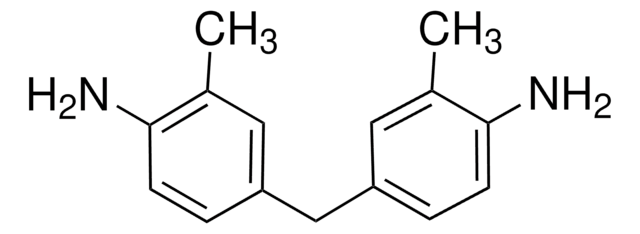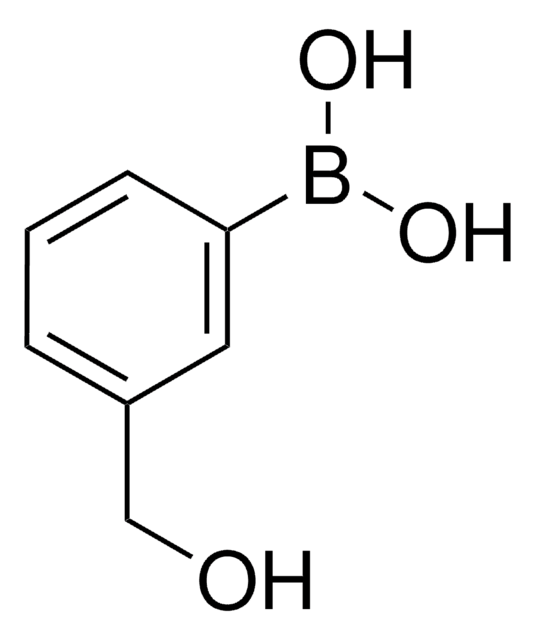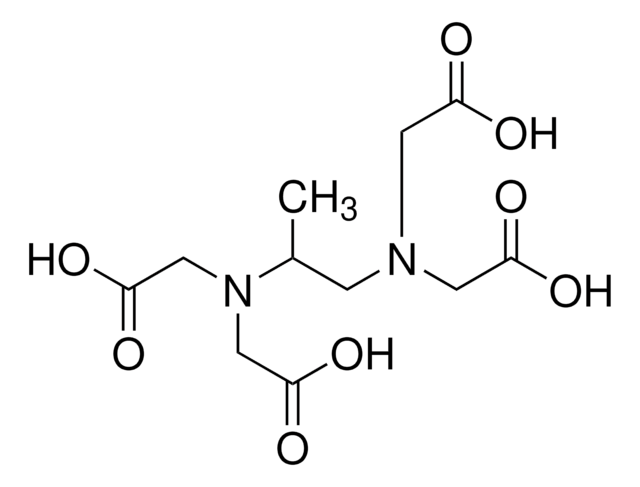54345
N-(2-Hydroxyethyl)iminodiessigsäure
≥98.0% (T)
Synonym(e):
Ethanol diglycine
About This Item
Empfohlene Produkte
Assay
≥98.0% (T)
Form
solid
mp (Schmelzpunkt)
178 °C (lit.)
Anwendung(en)
peptide synthesis
SMILES String
OCCN(CC(O)=O)CC(O)=O
InChI
1S/C6H11NO5/c8-2-1-7(3-5(9)10)4-6(11)12/h8H,1-4H2,(H,9,10)(H,11,12)
InChIKey
JYXGIOKAKDAARW-UHFFFAOYSA-N
Suchen Sie nach ähnlichen Produkten? Aufrufen Leitfaden zum Produktvergleich
Verwandte Kategorien
Allgemeine Beschreibung
Anwendung
- HEIDA can be used as a metal chelating agent for Fe(III) ion. The presence of HEIDA improves the Fenton′s destruction performance of PCE (perchloroethylene) existing as dense non-aqueous phase liquid (DNAPL) in soil slurry systems.
- Oxorhenium(V) complexes with HEIDA are used for the carboxylation of ethane by CO, with potassium peroxodisulfate (K2S2O8)/trifluoroacetic acid (TFA), to afford propionic and acetic acid in good yield.
- Vanadium complexes with HEIDA are used for the peroxidative hydroxylation of benzene and oxidation of mesitylene.
Signalwort
Warning
H-Sätze
Gefahreneinstufungen
Eye Irrit. 2 - Skin Irrit. 2 - STOT SE 3
Zielorgane
Respiratory system
Lagerklassenschlüssel
11 - Combustible Solids
WGK
WGK 3
Flammpunkt (°F)
Not applicable
Flammpunkt (°C)
Not applicable
Persönliche Schutzausrüstung
dust mask type N95 (US), Eyeshields, Gloves
Analysenzertifikate (COA)
Suchen Sie nach Analysenzertifikate (COA), indem Sie die Lot-/Chargennummer des Produkts eingeben. Lot- und Chargennummern sind auf dem Produktetikett hinter den Wörtern ‘Lot’ oder ‘Batch’ (Lot oder Charge) zu finden.
Besitzen Sie dieses Produkt bereits?
In der Dokumentenbibliothek finden Sie die Dokumentation zu den Produkten, die Sie kürzlich erworben haben.
Kunden haben sich ebenfalls angesehen
Unser Team von Wissenschaftlern verfügt über Erfahrung in allen Forschungsbereichen einschließlich Life Science, Materialwissenschaften, chemischer Synthese, Chromatographie, Analytik und vielen mehr..
Setzen Sie sich mit dem technischen Dienst in Verbindung.












